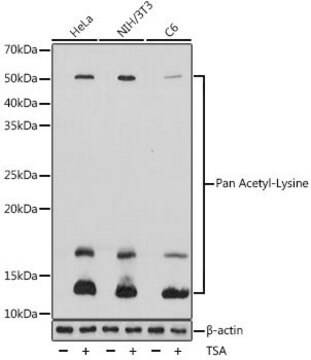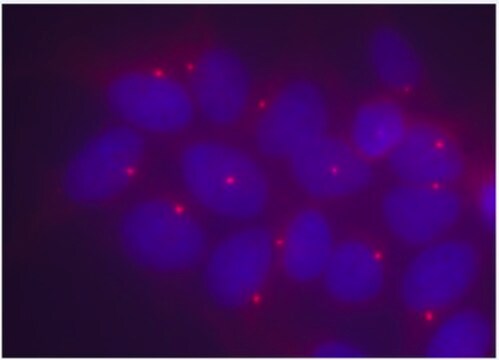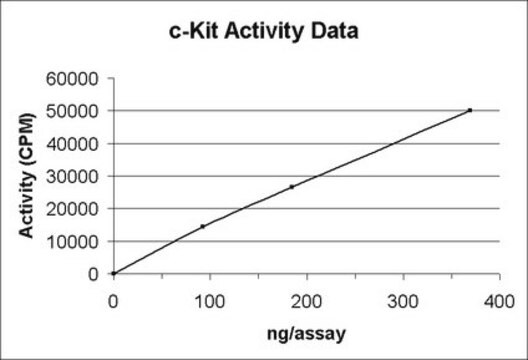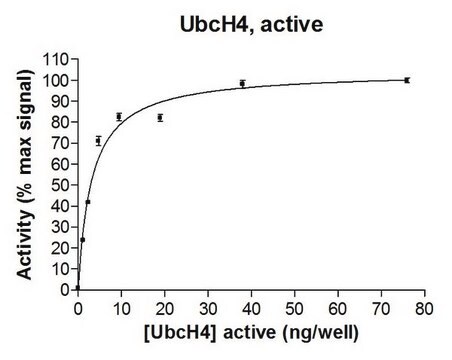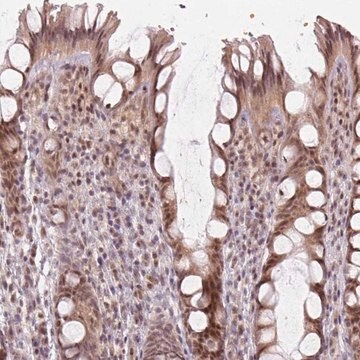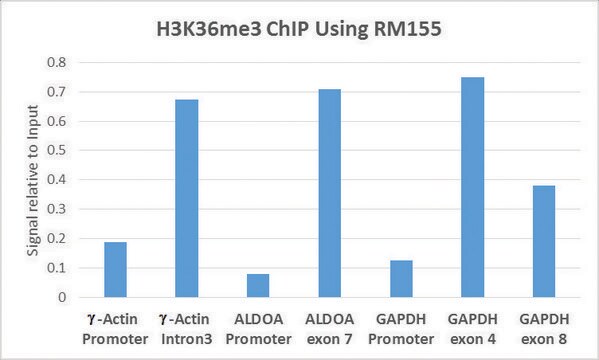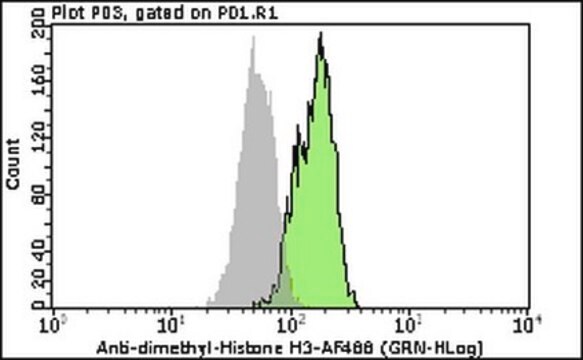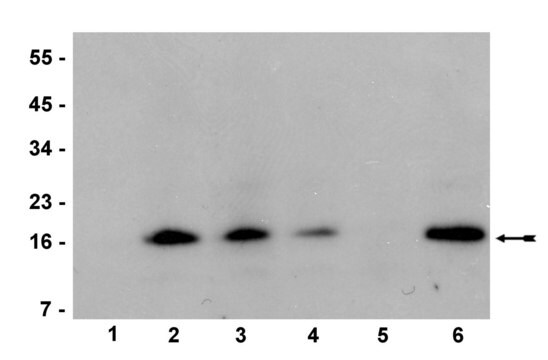17-10032
ChIPAb+ Trimethyl-Histone H3 (Lys36) - ChIP Validated Antibody and Primer Set, rabbit monoclonal
from rabbit
Sinónimos:
H3K36me3, Histone H3 (tri methyl K36), H3 histone family, member T, histone 3, H3, histone cluster 3, H3
About This Item
Productos recomendados
origen biológico
rabbit
Nivel de calidad
forma del anticuerpo
purified immunoglobulin
clon
monoclonal
reactividad de especies
human, chicken
fabricante / nombre comercial
ChIPAb+
Upstate®
técnicas
ChIP: suitable
cell based assay: suitable
dot blot: suitable
immunoprecipitation (IP): suitable
western blot: suitable
isotipo
IgG
Nº de acceso NCBI
Nº de acceso UniProt
Condiciones de envío
dry ice
Descripción general
The ChIPAb+ Trimethyl-Histone H3 (Lys36) set includes the Trimethyl-Histone H3 (Lys36) antibody, a negative control antibody (normal rabbit IgG), and qPCR primers which amplify a 147 bp region of human BDNF intron. The Trimethyl-Histone H3 (Lys36) and negative control antibodies are supplied in a scalable "per ChIP" reaction size and can be used to functionally validate the precipitation of Trimethyl-Histone H3 (Lys36)-associated chromatin.
Especificidad
Inmunógeno
Aplicación
Sonicated chromatin prepared from HeLa cells (1 X 106 cell equivalents per IP) were subjected to chromatin immunoprecipitation using 2 µg of either Normal rabbit IgG or 2 µL Anti-trimethyl-Histone H3 (Lys36) and the Magna ChIP A Kit (Cat. # 17-610). Successful immunoprecipitation of trimethyl-Histone H3 (Lys36) associated DNA fragments was verified by qPCR using ChIP Primers, BDNF Intron as a positive locus, and GAPDH promoter primers as a negative locus (Please see figures). Data is presented as percent input of each IP sample relative to input chromatin for each amplicon and ChIP sample as indicated.
Please refer to the EZ-Magna ChIP A (Cat. # 17-408) or EZ-ChIP (Cat. # 17-371) protocol for experimental details.
Western Blot Analysis and Peptide Inhibition:
Representative lot data.
Recombinant Histone H3 (Catalog # 14-411, lane 1) and chicken Core Histones (Catalog # 13-107, lane 2) were resolved by electrophoresis, transferred to nitrocellulose and probed with antitrimethyl-Histone H3 (Lys36) (1:1000 dilution) or anti-trimethyl-Histone H3 (Lys36) pre-adsorbed with 1mM histone H3 peptides containing the following modifications:
Lane 3: monomethyl-lysine 36
Lane 4: dimethyl-lysine 36
Lane 5: trimethyl-lysine 36
Lane 6: unmodified
Proteins were visualized using a goat anti-rabbit secondary antibody conjugated to HRP and a chemiluminescence detection system. (Please see figures).
Peptide Dot Blot Analysis:
Representative lot data.
A dilution series of Histone H3 peptides containing the following modifications was made:
Column 1: unmodified
Column 2: monomethyl-lysine 36
Column 3: dimethyl-lysine 36
Column 4: trimethyl-lysine 36
2 μL of each dilution was spotted onto a PVDF membrane and probed with antitrimethyl-Histone H3 (Lys36), (1:1000 dilution).
Peptides were visualized using a goat anti-rabbit secondary conjugated to HRP and a chemiluminescence detection system (Please see figures).
Epigenetics & Nuclear Function
Histones
Envase
Calidad
Sonicated chromatin prepared from HeLa cells (1 X 106 cell equivalents per IP) were subjected to chromatin immuno-precipitation using 2 µg of either Normal Rabbit IgG or 2 µL Anti-trimethyl-Histone H3 (Lys36) and the Magna ChIP® A Kit (Cat. # 17-610).
Successful immunoprecipitation of trimethyl-Histone H3 (Lys36) associated DNA fragments was verified by qPCR using ChIP Primers, BDNF Intron (Please see figures).
Please refer to the EZ-Magna ChIP A (Cat. # 17-408) or EZ-ChIP (Cat. # 17-371) protocol for experimental details.
Descripción de destino
Forma física
Normal Rabbit IgG. One vial containing 125 µg Rabbit IgG in 125 µL of storage buffer containing 0.05% sodium azide. Store at -20°C.
ChIP Primers, BDNF Intron. One vial containing 75 μL of 5 μM of each primer specific for human BDNF intron. Store at -20°C.
FOR: ACCCCAACCTCTAACAGCATTA
REV: TGTCTCTCAGCAGTCTTGCATT
Almacenamiento y estabilidad
Nota de análisis
Includes negative control rabbit IgG antibody and primers specific for human BDNF Intron.
Información legal
Cláusula de descargo de responsabilidad
Código de clase de almacenamiento
10 - Combustible liquids
Certificados de análisis (COA)
Busque Certificados de análisis (COA) introduciendo el número de lote del producto. Los números de lote se encuentran en la etiqueta del producto después de las palabras «Lot» o «Batch»
¿Ya tiene este producto?
Encuentre la documentación para los productos que ha comprado recientemente en la Biblioteca de documentos.
Nuestro equipo de científicos tiene experiencia en todas las áreas de investigación: Ciencias de la vida, Ciencia de los materiales, Síntesis química, Cromatografía, Analítica y muchas otras.
Póngase en contacto con el Servicio técnico